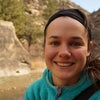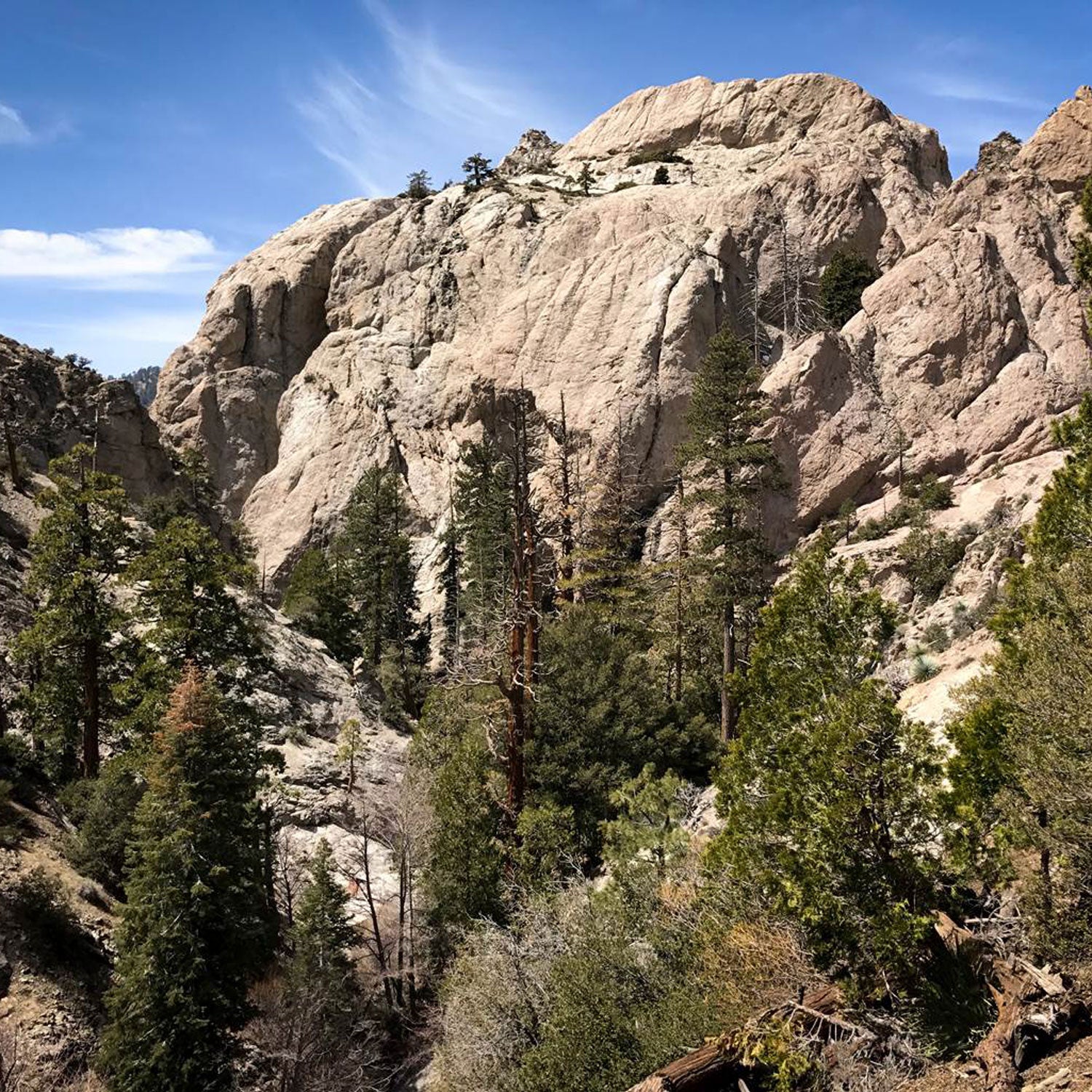The cliffs of Williamson Rock are a sport climber’s dream. Located in Southern California’s San Gabriel Mountains National Monument, the highly featured granitic rock offers around 225 routes, ranging in difficulty from 5.6 to 5.13, and its east-facing, high-elevation position keeps the crag shady and cool on most days.
Since 2005, the area has been closed to hikers and climbers after the discovery of an endangered mountain yellow-legged frog population. But at the end of July, the Forest Service completed a long-awaited draft environmental impact statement, which proposes a compromise between climbers and conservationists, allowing access to most of the area’s cliffs while keeping routes in or adjacent to frog habitat in Little Rock Creek closed. The proposal would also reopen a 7.8-mile section of the Pacific Crest Trail. (Hikers have had to take either a 20-mile detour or a shorter but more dangerous detour along a highway.) The change could come as early as next year. And as is the case with most good compromises, both sides are a little unhappy.
Climbing at Williamson Rock started in the 1960s and blew up in the 1990s—long before it became part of a national monument in 2014—a time when sport climbing was taking off in popularity nationwide. In that time, Williamson Rock became Southern California’s premier sport crag, , a rock climbing advocacy organization. “There would be times when the entire mountain road would be lined with cars,” says Troy Mayr, a photographer and business consultant who developed routes and guidebooks for the area. “On a busy weekend, there would literally be hundreds of people.”
“What we’re proposing is groundbreaking for our forest.”
Thirteen years ago, only five mountain yellow-legged frogs were believed to be left in Little Rock Creek. The Forest Service closed the area for a year to assess the needs of the frogs and because officials worried climbers and hikers might trample in and around the waters where the frogs lay eggs. After the yearlong ban ended, the Center for Biological Diversity sued the Forest Service to renew the closure, arguing that the agency’s management plan was not in accordance with the Endangered Species Act. The Access Fund joined the fray, and for more than a decade the three have been arguing over whether people should be allowed in the area and what protection should look like for the mountain yellow-legged frog.
Since the amphibian’s listing, in 2002, officials have installed fish barriers in the creek and removed nonnative trout, which were preying on the frogs. Thanks in large part to these hands-on federal efforts, biologists counted 134 frogs in 2016. And while that’s an improvement, it’s still not a victory. “The population’s still very much in danger,” says Jose Henriquez-Santos, a Forest Service landscape architect in charge of a team of specialists analyzing options at the site.
In its recent , the Forest Service recommends balancing the needs of wildlife and recreation. It’s just one of several possible options, and before any decision is made, official have opened a ending September 10. If the plan goes through, it would allow Williamson Rock to open to 90 climbers per day between August 1 and November 15 each year. The closure time frame covers the nesting season of peregrine falcons (also found on the site), as well as an existing yearly winter road closure. Going forward, the dates could change depending on how the frogs react to visitors. If the population tanks, the full closure would resume. But if the frogs recover, the Forest Service could allow more people in each day.
As for hikers on the nearby PCT, the Forest Service plans to build a bridge over the habitat so the frogs are left undisturbed and so people don’t have to make a long detour.
“What we’re proposing is groundbreaking for our forests,” Henriquez-Santos says.
Erik Murdock, policy director at the Access Fund, generally agrees with this approach but worries it’s still too inflexible. For example, he says that despite the annual weather-related road closure on November 16, the pavement leading up to Williamson Rock has rarely iced over in recent years, but a hard rule keeps climbers out no matter the road conditions. Murdock is also concerned that this temporary plan will become permanent because of “bureaucratic stagnancy” and a lack of funds needed to implement monitoring. He says that “snow should dictate when the road closes, raptor nesting behavior should determine when and where raptor closures are implemented, and frog habitat should determine when and where climbers and hikers can walk.”
The Access Fund is also concerned about the point system proposed by the Forest Service. In it, visitor violations—such as littering, trampling vegetation, or entering closed areas—accrue points depending on severity. If the number hits 100 in a season, Williamson Rock will be closed for the year. Katie Goodwin, the organization’s public lands associate, says this first-of-its-kind system is redundant since Forest Service staff will be on-site issuing citations. “Climbers could be implicated or punished for other user groups doing something,” she says.
The Center for Biological Diversity, meanwhile, would still rather see a full closure until the frog is moved to threatened status, a step down from endangered, according to senior scientist Ileene Anderson. She also expressed doubts about the Forest Service’s ability to pay for new staff needed to manage and enforce the restrictions. “I’m dubious about their capacity to fulfill these obligations that they’re proposing,” Anderson says. “That can potentially be a disservice to the recovery of the frog. So why not just wait until we can get a better population of frogs across the range?”
Still, others believe that allowing some recreation to occur is important. Mayr, the photographer who developed early guidebooks for the area, argues that access is crucial to stoking interest in protecting nature. “If you lock [a resource] up in an ivory tower, people aren’t going to know what the resource is that they’re protecting,” he says.
After the draft statement’s comment period is over, the Forest Service will prepare a document that lays out its final decision. There will be another 45-day period to object, but if approved, the plan could be put into action as soon as 2019—although, since the plan includes the construction of a bridge, the Forest Service says it’s likely the crag would not officially open until 2020.
If a compromise can’t be reached between climbers and environmentalists, it’s possible that Williamson Rock could be caught in a legal fight and stay closed for years or longer. Hopefully, Henriquez-Santos says, that can be avoided. “If we could find a happy medium,” he says, “we’ll be better for it.”


